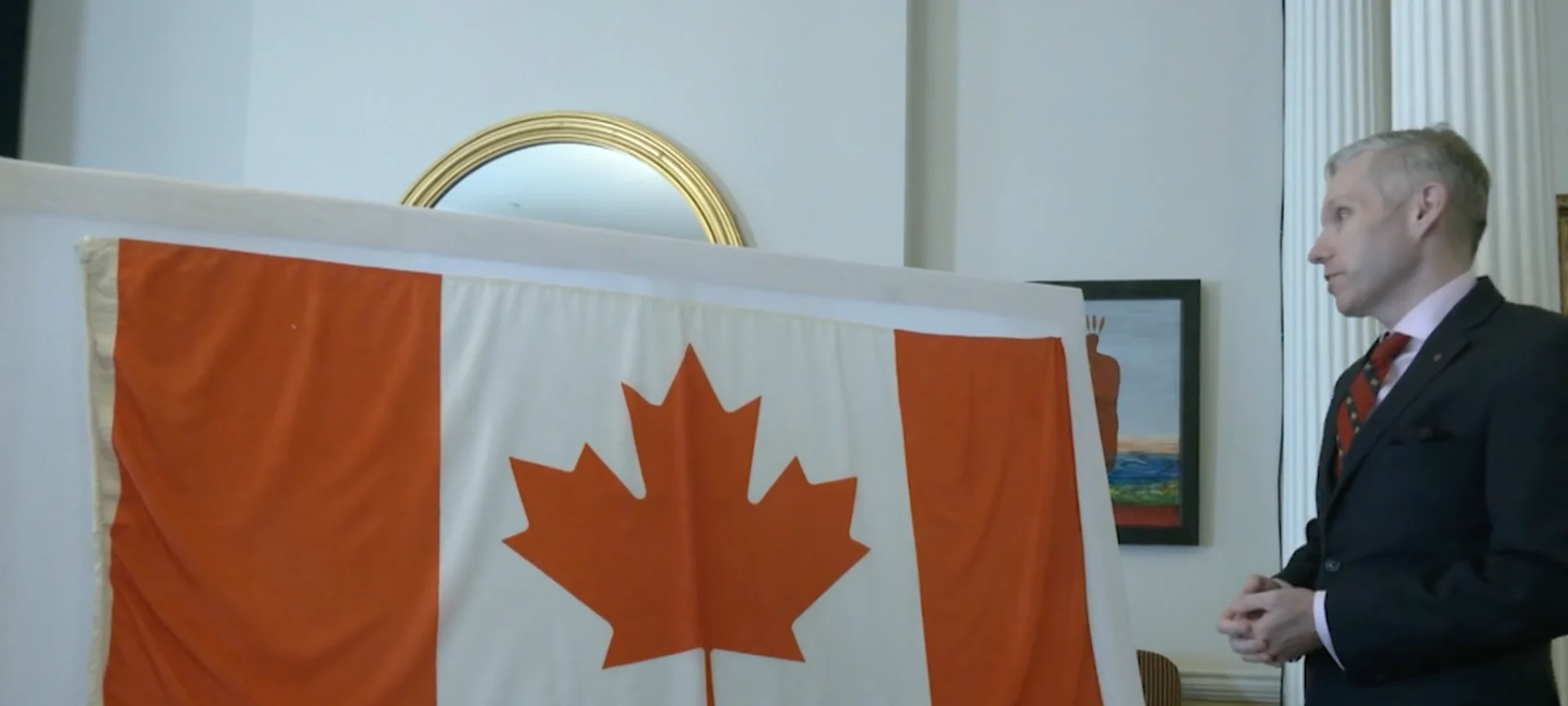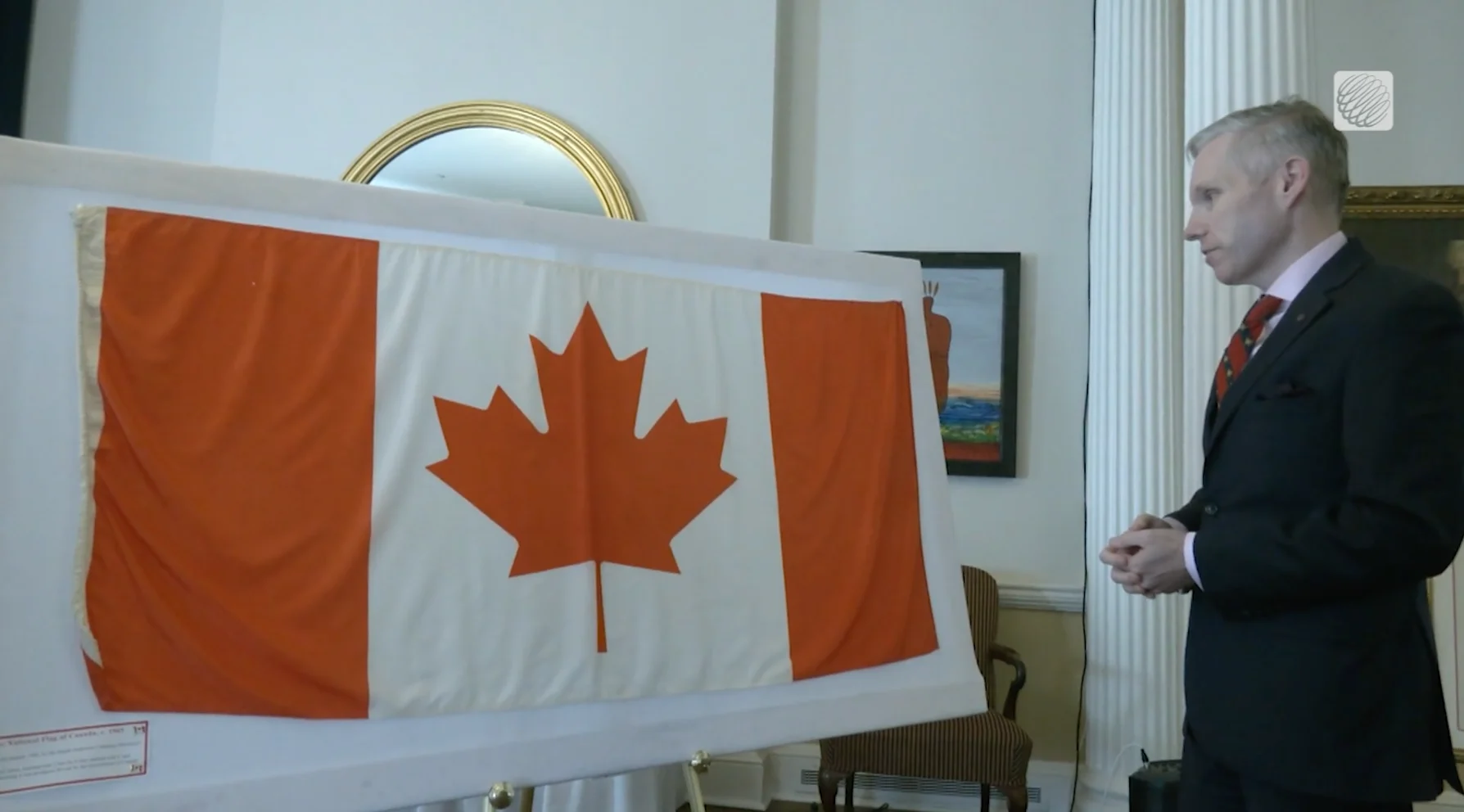
Celebrating Canada Day: A guide to proper flag etiquette
While Canadians are humble about our national symbol, there are guidelines for respecting the flag
In honour of Canada Day, we spoke with Christopher McCreery, Private Secretary and Executive Director of the Order of Nova Scotia, who shared valuable insights on the proper treatment and display of the Canadian flag.
Please read below and watch the video above to learn the proper guidelines when it comes to respecting our national symbol.
The Importance of Proper Flag Care
As McCreery notes, when The Weather Network warns of heavy winds, it’s prudent to take action: “That’s the time to go outside, providing it’s not lightning, and remove the flag.” This simple precaution can help preserve the integrity of the flag, which serves as a powerful symbol of national unity for Canadians.
A Historical Artifact
Among the first 500 national flags made in Canada in January 1965, one of these flags was raised for the first time on Parliament Hill on February 15 of that year. Today, it resides as an artifact at Government House in Nova Scotia, albeit with some wear: “It’s gotten a bit orange,” McCreery explains. This discolouration is a result of issues with the dye used in the initial flag production.

Christopher McCreery, Private Secretary and Executive Director of the Order of Nova Scotia observing one of the first 500 national flags made in Canada in January 1965, now housed in Halifax. (Photo credit: Nathan Coleman/The Weather Network)
SEE ALSO: We love Canada. Here are a few reasons why.
Guidelines for Displaying the Flag
With many Canadians purchasing new flags as a sign of renewed national pride, McCreery emphasizes that while there are no official “flag police,” there are guidelines to follow. “You should always treat the national flag or any flag with respect,” he advises. This means avoiding using the flag as a tablecloth or window curtain. The appropriate way to display a flag is on a flagpole, where it can be seen and honoured.
Symbol of National Unity
He says the Canadian flag is more than just a decoration; it embodies the spirit of the nation.
“Now, when I was in university, I hung one in my window," McCreery shared of his own experience. "You sort of get a free pass when you’re young and just learning about these things.”
However, as one matures, understanding the significance of the flag becomes
WATCH: How did Canada choose its iconic flag?
DON'T MISS: Made in Canada - The UV and AQHI indexes that protect our health
Weather Considerations
Weather can significantly affect flag maintenance. McCreery warns that strong winds can cause damage.
“The wind will grab this. It’ll grab and pull it all apart.”
If a flag begins to show signs of wear, he recommends seeking repairs at a flag shop before it becomes too tattered.
Flying Protocols in the Canadian Forces
Within the Canadian Forces, specific rules govern flag display. The flag is flown from sunrise to sunset and may only be displayed at night if it is properly lit. Additionally, McCreery advises against flying multiple flags from a single pole, as this can lead to safety hazards.
“Flagpoles are designed to fly one flag and deal with the wind shear of one standard-sized flag,” he explains.
Multiple flags can compromise the pole’s stability, particularly in adverse weather conditions.
Proper Disposal of Worn Flags
When a flag becomes too worn or damaged, it is important to dispose of it respectfully. For nylon flags, the proper method is to cut the flag into strips so that it can no longer be recognized as a flag before discarding it. In contrast, cotton or linen flags should be burned in a respectful manner.
“What you don’t want is a crumpled-up Canadian flag or any other flag ending up in the garbage or on the side of the road,” McCreery warns, highlighting the importance of treating this national symbol with the dignity it deserves.
